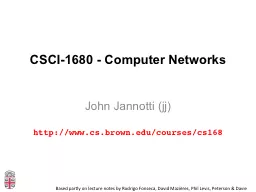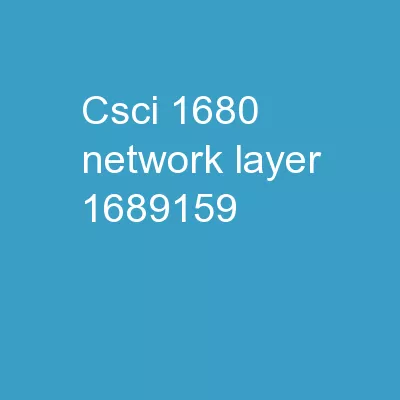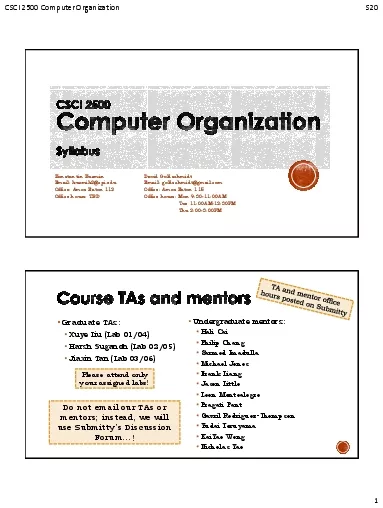PPT-CSCI-1680 Security Based on lecture notes
Author : giovanna-bartolotta | Published Date : 2018-03-23
by Rodrigo Foncesa Scott Shenker and Mike Freedman Theophilus Benson Admini Trivia HW 2 graded and on Sakai Avg 96 StdDev 20 Scores out of 120 points not including
Presentation Embed Code
Download Presentation
Download Presentation The PPT/PDF document "CSCI-1680 Security Based on lecture note..." is the property of its rightful owner. Permission is granted to download and print the materials on this website for personal, non-commercial use only, and to display it on your personal computer provided you do not modify the materials and that you retain all copyright notices contained in the materials. By downloading content from our website, you accept the terms of this agreement.
CSCI-1680 Security Based on lecture notes: Transcript
Download Rules Of Document
"CSCI-1680 Security Based on lecture notes"The content belongs to its owner. You may download and print it for personal use, without modification, and keep all copyright notices. By downloading, you agree to these terms.
Related Documents














